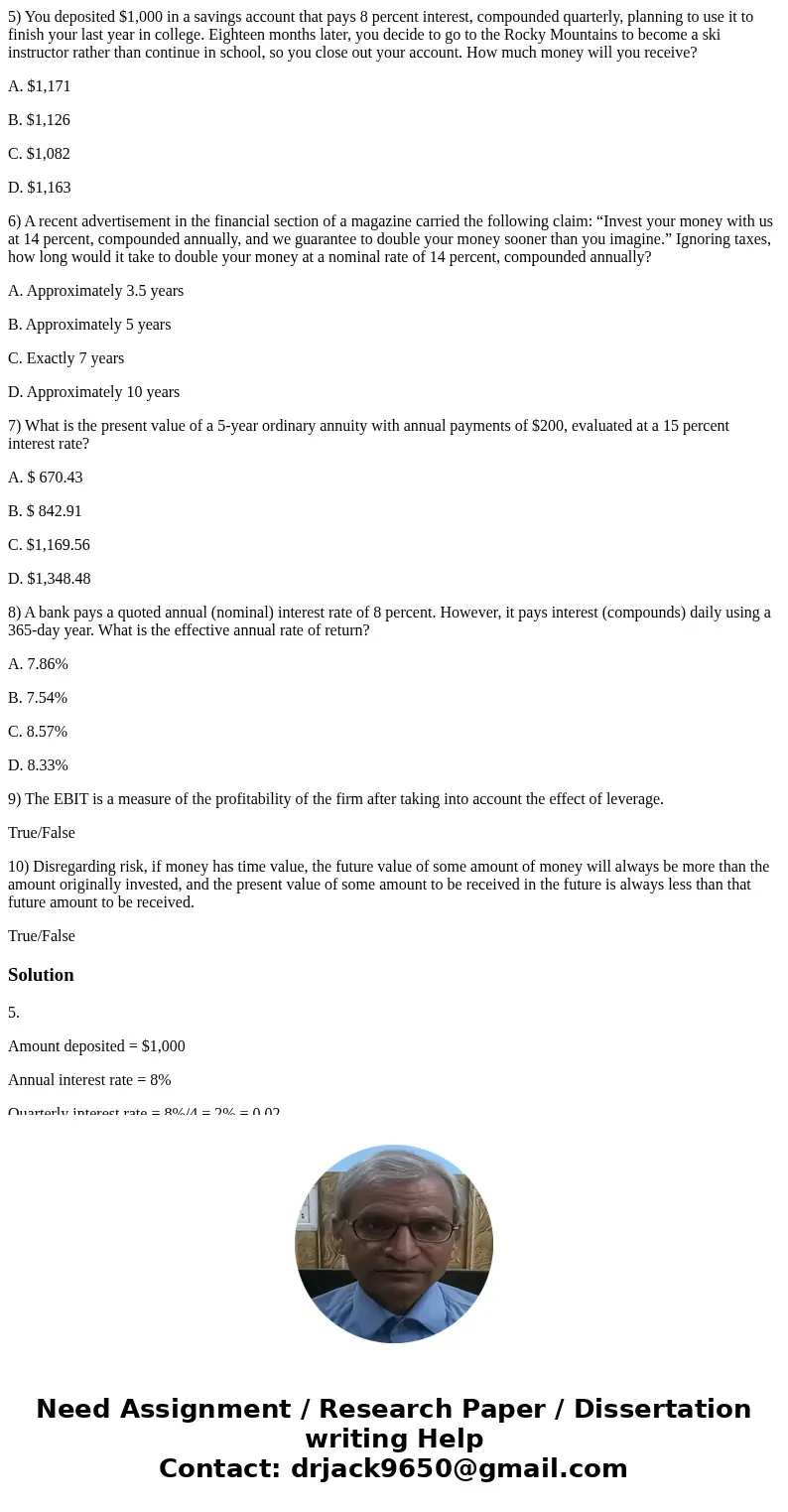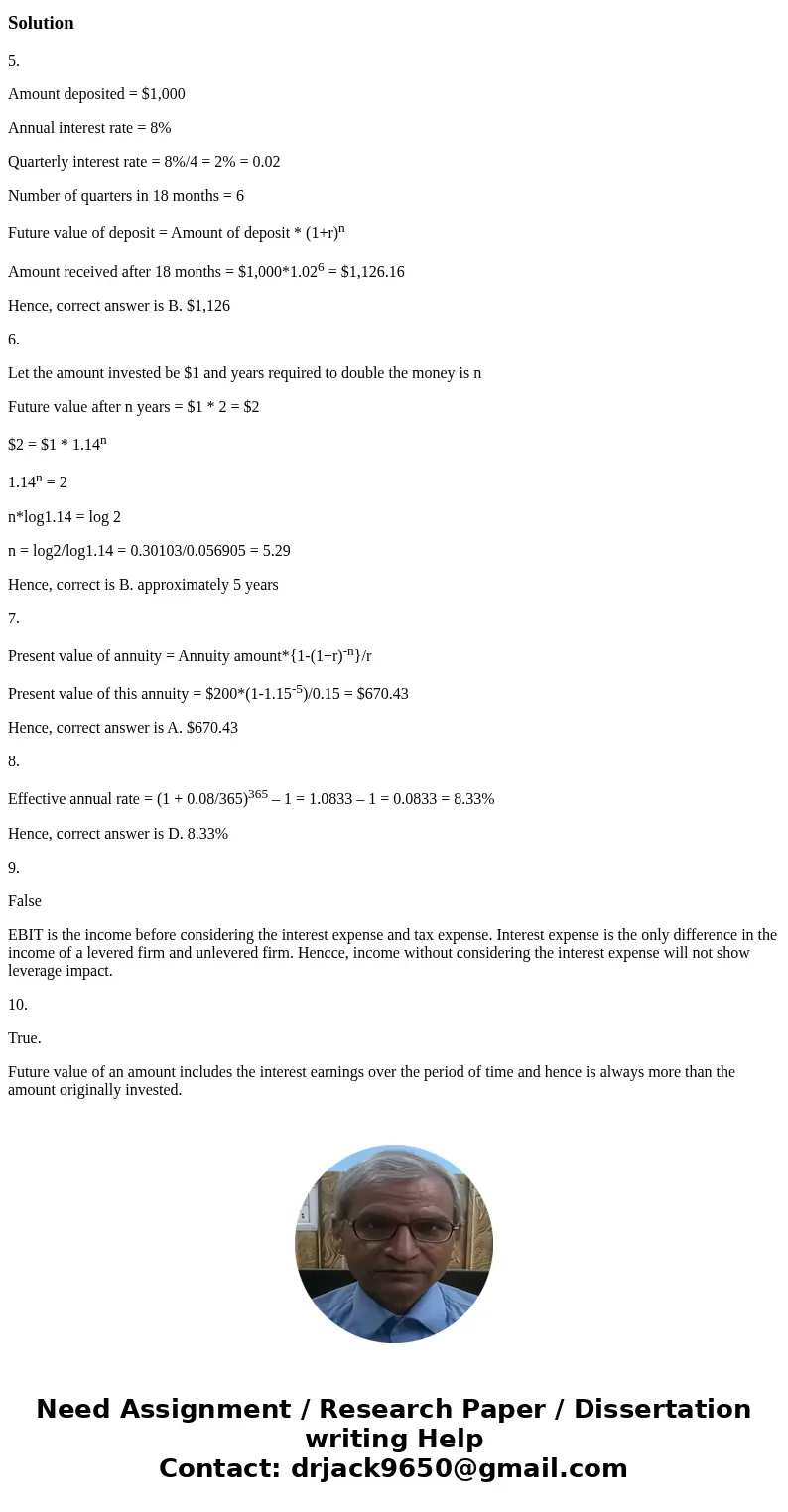5 You deposited 1000 in a savings account that pays 8 percen
5) You deposited $1,000 in a savings account that pays 8 percent interest, compounded quarterly, planning to use it to finish your last year in college. Eighteen months later, you decide to go to the Rocky Mountains to become a ski instructor rather than continue in school, so you close out your account. How much money will you receive?
A. $1,171
B. $1,126
C. $1,082
D. $1,163
6) A recent advertisement in the financial section of a magazine carried the following claim: “Invest your money with us at 14 percent, compounded annually, and we guarantee to double your money sooner than you imagine.” Ignoring taxes, how long would it take to double your money at a nominal rate of 14 percent, compounded annually?
A. Approximately 3.5 years
B. Approximately 5 years
C. Exactly 7 years
D. Approximately 10 years
7) What is the present value of a 5-year ordinary annuity with annual payments of $200, evaluated at a 15 percent interest rate?
A. $ 670.43
B. $ 842.91
C. $1,169.56
D. $1,348.48
8) A bank pays a quoted annual (nominal) interest rate of 8 percent. However, it pays interest (compounds) daily using a 365-day year. What is the effective annual rate of return?
A. 7.86%
B. 7.54%
C. 8.57%
D. 8.33%
9) The EBIT is a measure of the profitability of the firm after taking into account the effect of leverage.
True/False
10) Disregarding risk, if money has time value, the future value of some amount of money will always be more than the amount originally invested, and the present value of some amount to be received in the future is always less than that future amount to be received.
True/False
Solution
5.
Amount deposited = $1,000
Annual interest rate = 8%
Quarterly interest rate = 8%/4 = 2% = 0.02
Number of quarters in 18 months = 6
Future value of deposit = Amount of deposit * (1+r)n
Amount received after 18 months = $1,000*1.026 = $1,126.16
Hence, correct answer is B. $1,126
6.
Let the amount invested be $1 and years required to double the money is n
Future value after n years = $1 * 2 = $2
$2 = $1 * 1.14n
1.14n = 2
n*log1.14 = log 2
n = log2/log1.14 = 0.30103/0.056905 = 5.29
Hence, correct is B. approximately 5 years
7.
Present value of annuity = Annuity amount*{1-(1+r)-n}/r
Present value of this annuity = $200*(1-1.15-5)/0.15 = $670.43
Hence, correct answer is A. $670.43
8.
Effective annual rate = (1 + 0.08/365)365 – 1 = 1.0833 – 1 = 0.0833 = 8.33%
Hence, correct answer is D. 8.33%
9.
False
EBIT is the income before considering the interest expense and tax expense. Interest expense is the only difference in the income of a levered firm and unlevered firm. Hencce, income without considering the interest expense will not show leverage impact.
10.
True.
Future value of an amount includes the interest earnings over the period of time and hence is always more than the amount originally invested.


 Homework Sourse
Homework Sourse